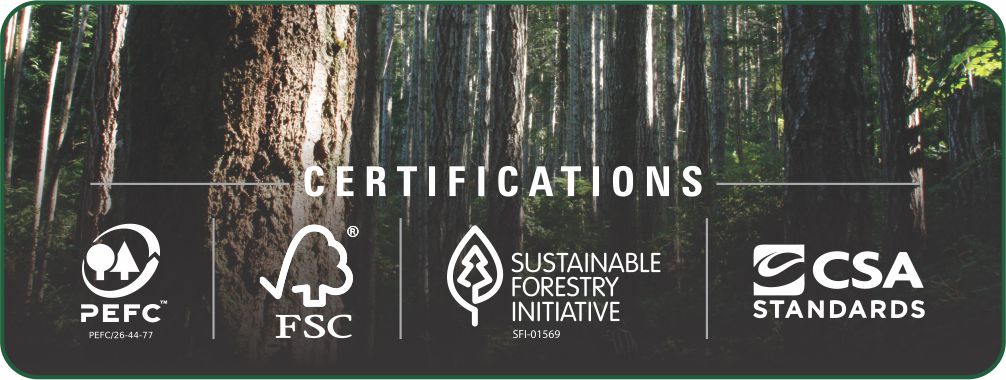Within the rich forests of British Columbia, Canada, where sustainable forest management practices are a hallmark, a diverse array of wood species thrives. Each lends its unique attributes to the region’s renowned status as a global centre for top-notch wood products. Five standout species, celebrated for their strength, durability, and aesthetic appeal, play crucial roles in shaping structures and designs across construction, woodworking, and interior industries.
Diverse B.C. Canada wood species

- Western Hemlock: Standing tall along the coastal mountain ranges, Western Hemlock dominates the landscape of British Columbia. Comprising 17.7% of the total volume, it’s known for its even density and excellent machining properties. Ideal for furniture, interior woodworking, doors, mouldings, and more, Western Hemlock’s versatility shines. It finds application in general construction, roof decking, and plywood, with a notable presence in the Japanese market.
- Douglas-fir: Valued worldwide for its extraordinary strength-to-weight ratio, the Douglas-fir is a towering giant that reaches heights of up to 85 meters. It excels in heavy structural applications, including post and beam construction, glue-laminated beams, doors, and general millwork. Douglas Fir’s excellent working properties and dimensional stability make it a top choice for construction projects and furniture manufacturing.
- Yellow cedar: A slow-growing gem, Yellow cedar takes over 200 years to mature in the coastal mountains. Its fine texture and straight grain, coupled with natural decay resistance, make it suitable for shingles, marine pilings, decorative panelling, and carving. Its durability and ease of machining make it a perfect choice for various applications, from furniture to exterior structures.
- Western red cedar: Western red cedar, one of the most commercially valuable species, thrives along the coast and in the wet belt of British Columbia. Its natural resistance to termites, rot, and decay makes it an ideal choice for outdoor applications. Moreover, its attractive appearance, lightweight nature, and versatility extend to interior uses, including wood products like wall panelling and saunas.
- Spruce-Pine-Fir (SPF): Combining Engelmann spruce, Lodgepole pine, and Subalpine fir, SPF boasts a high strength-to-weight ratio and finds primary use in framing North American housing. Its dimensional stability and superior glueing properties make it essential in various applications across residential, commercial, and industrial construction. Additionally, it plays a crucial role in the flat-packed furniture industry.
Contribution of B.C. Canada wood species to construction and sustainable design
In the intricate tale of British Columbia’s wood species, each variety plays a distinctive role, intertwining strength, versatility, durability, beauty, and functionality into the fabric of construction and design. In India, these woods meet consumer demands with stable lumber, enabling warp-free engineered elements due to straight grain. As these woods become integral to structures, furniture, and artworks, they stand as testaments to the enduring legacy of craftsmanship. They also represent the unparalleled quality that defines British Columbia’s wood industry.
Additionally, British Columbia, Canada, stands out globally as a leader in sustainable forest management practices. The region ensures the protection and certification of its forests, employing sustainable forest certification as a mechanism to uphold the highest environmental standards within the forestry industry. This comprehensive process involves monitoring, tracing, and labelling timber, wood, pulp products, and non-timber forest products. These actions are based on agreed-upon standards that encompass environmental, social, and economic perspectives.
Role of wood certification: PEFC as a crucial mechanism

Certifications such as the Programme for the Endorsement of Forest Certification (PEFC) act as crucial mechanisms to promote sustainable forestry practices. Responsibly sourced wood, like Canadian Wood originating from British Columbia’s sustainable forests, sets a high standard in this regard. These certifications act as beacons guiding the industry toward responsible and environmentally friendly wood production practices. They contribute to the maintenance of healthy ecosystems by preventing deforestation, promoting reforestation, and discouraging the use of harmful chemicals.





















